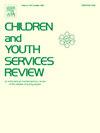Material hardship and child outcomes in two-parent families: Perspectives from family stress, investment, and developmental cascade theories
IF 2.4
2区 社会学
Q1 FAMILY STUDIES
引用次数: 0
Abstract
Objective
This study examines the impact of material hardship on the cognitive, academic, and behavioral outcomes of children at the age of 9 in two-parent families. It integrates the theoretical lenses of Family Stress Theory (FST), Family Investment Theory (FIT), and Developmental Cascade Theory (DCT) to examine both the direct and indirect effects of material hardship.
Method
Utilizing data from the first five waves of the Future of Families and Child Wellbeing Study (FFCWS), this study focuses on 1,271 two-parent families, tracking the developmental trajectories of children from birth to age 9. Structural Equation Modeling (SEM) is employed to explore the relationship between material hardship, learning environment quality, parental stress and behavior, and children’s academic and behavioral outcomes.
Results
Our findings suggest that while material hardship significantly affects the early learning environment, this does not directly predict academic or behavioral outcomes at age 9, challenging the predictions of standard FIT. However, material hardship’s indirect effects, through early learning environments and vocabulary skills, support the integrated approach of FIT and DCT. Conversely, FST’s hypothesis finds support in the significant indirect effects of material hardship on behavioral problems through parental stress and harsh discipline, indicating the complex interplay of economic hardship with child development over time.
Conclusion
The study underscores the critical role of early material hardship in shaping the developmental pathways of children within two-parent families. These findings suggest a holistic approach that incorporates FST, FIT, and DCT. Such an approach would expand support for two-parent families facing material hardship, emphasizing the importance of enhancing the learning environment and reducing parental stress to foster children’s well-being.
求助全文
约1分钟内获得全文
求助全文
来源期刊

Children and Youth Services Review
Multiple-
CiteScore
6.30
自引率
6.10%
发文量
303
期刊介绍:
Children and Youth Services Review is an interdisciplinary forum for critical scholarship regarding service programs for children and youth. The journal will publish full-length articles, current research and policy notes, and book reviews.
 求助内容:
求助内容: 应助结果提醒方式:
应助结果提醒方式:


